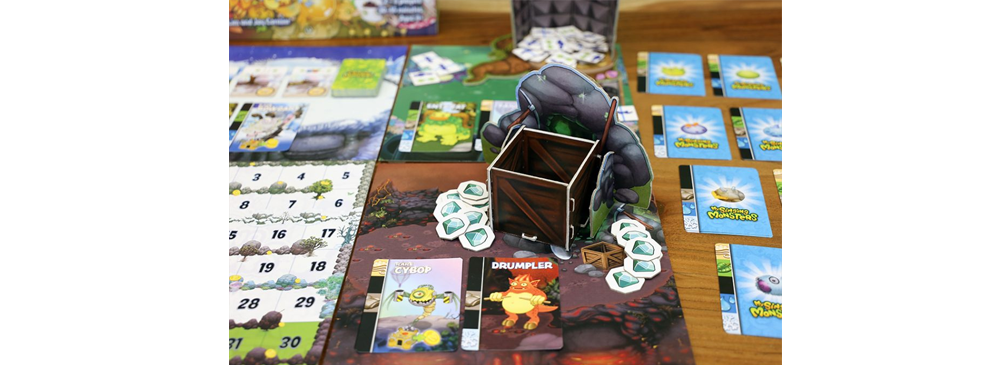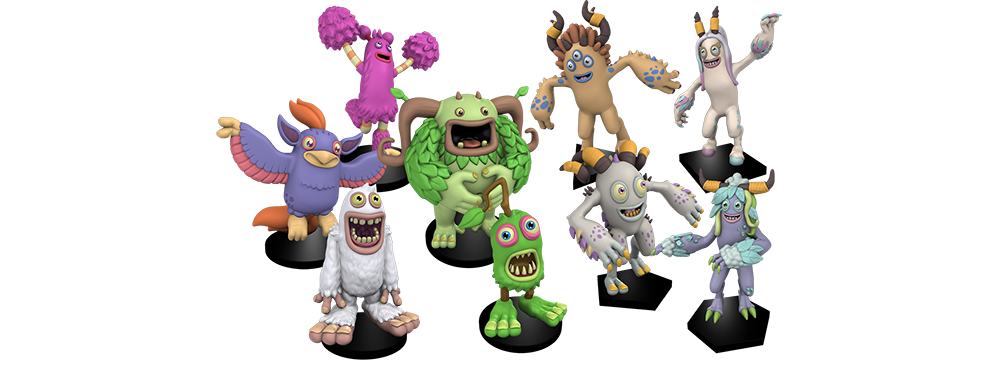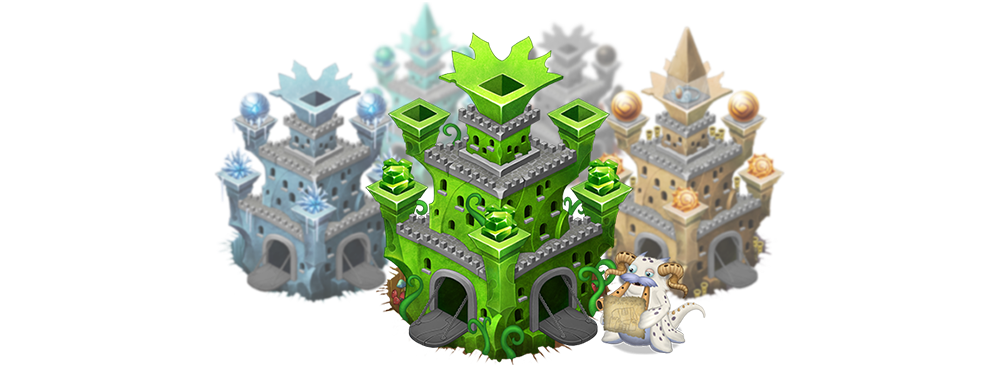What core elements from the app are being brought over to the board game version? Will these core elements keep people engaged as they do in the app?
Jay: Right away we knew we wanted to have breeding in the game. We thought a game where there were various structures you could visit for certain benefits would make a nice fit. It quickly became what’s known as a worker placement game. In a worker placement game each player takes a turn placing one of their workers on an available space. Usually those spaces get reduced as players place their workers, but once all workers have been placed, the round is over and everyone collects their workers for the next round.
We didn’t think using tokens as workers would be as interesting because fans of the app would want to see each Monster, so we thought our workers could be cards. Each card could have a different Monster on it. On your turn you would place a card on one of the Island structures to activate it and get its benefit.
We soon saw that by having only one location that allowed you to breed, that the game was very slow and it took a long time to breed bigger and better Monsters. Our solution was simple: every location allows you to breed! Now players were more motivated to go to all the other Island structures.
Sen: One of my favourite things to do in the app is to breed for new Monsters! I love the feeling of putting two Monsters together to get something else I need from that. In My Singing Monsters: The Board Game, not only can you get a new Monster to work with, you get all of the elemental notes that they generate AND the benefit of the location where you placed your Monster this turn. You lose one of the Monsters, but you hopefully gained an even better one in the process! The elemental notes are used to complete your goal of creating music, so you want to take a look at what you’re playing so that you generate elements that you can use. So one simple action – breeding – creates some really interesting decisions: what elemental notes do I need right now? What kind of Monster do I want to play next turn? What island gives me a cool benefit right now? In having all of those decisions, the core action of the app is very engaging and gets even more engaging as you add islands to the initial set up. The way the game is scaled, we designed it so that new players wouldn’t be overwhelmed and experienced players wouldn’t get bored.
Other core elements from the app include decorations. In the app, players place these next to certain Monsters to gain a benefit. In the board game, these help to keep people engaged because they make you look at what your neighbors are doing on their turns – you can get benefits on their turns, if they do certain actions while you have specific decorations! This helps keep players active on every one else’s turns and the decorations are always things that benefit their owners – who wouldn’t want to pay attention when you get rewarded for what someone else does?

What aspects of the board game will make it stand out from the app?
Jay: The board game grows with you and your family as you play it. This means you can start off playing a very straightforward game with minimal rules and only one location to visit. Then, once your family feels comfortable, they can add one more island to the game, which adds new components and rules to the game. You can keep adding islands until you get to five islands in play! At that point you’ve trained your family to play strategy board games. I’ve never seen that in a board game before!
Sen: The other thing that will make it stand out from the app is the pure physicality of it all! With some amazing figurines of the community’s favourite Monsters in the box [exclusively in the Kickstarter Deluxe edition], this game will pop right off the table top! Did you know that they come fully painted? That’s amazing! I can’t wait to see Entbrat (my personal favourite) all painted up and on my game table! The tabletop version has a different type of strategic and tactical play from the app, given that it’s a multiplayer competitive game. As such, there’s scoring in the game that doesn’t occur in the app. I love the scoring rules in My Singing Monsters: The Board Game. You’re always trying to figure out when it’s best for you to score so you can maximize each play.

What mechanics from the app do you wish you could bring into the board game?
Jay: We tried for a while to make the game about building up your own castle. Every time you upgraded your castle, you gained a new benefit and the winner was the one who upgraded their castle to the best one. Once we boiled the game down to a one location game (that grows to a 5 island game), we realized we had to simplify it. We removed the castle upgrading (as that was a different location), and then simply added a score track. We said that only one score token can ever be on a space at a time and if you ever land on a space with a token, you move ahead to the next empty space. This aspect was really fun and added a neat timing aspect to completing your music cards and scoring bonus points. We all loved this so much that we decided to make this the main way to score for every level of the game. This meant we had to get rid of the castle upgrade idea (which we were able to turn into decorations anyway – so it’s all good!)
Sen: More Monsters! More elements! I really adore the lore of My Singing Monsters, so I was sad when we realized that we couldn’t port it all over to an analogue format. The issue is that there’s no computer doing all the work for you – with a board game, the players do all that memorization and calculation, so we really couldn’t go much past the Natural set without the number of cards and decision pathways becoming exponentially greater in number. That many items would be almost impossible to juggle and would make for a bloated and unwieldy game.
